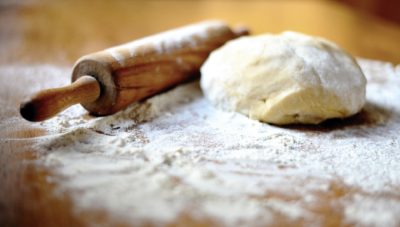
I was recently preparing for a dinner party, and I realized that one of my guests is on a gluten-free diet. The entree and sides I planned to serve were gluten-free, but the appetizers and dessert contained gluten.
One appetizer I had thought about offering was seasoned pecans made with pecans harvested from my pecan trees. This was quick and easy, so I made a batch. The recipe did not include soy sauce, so it was gluten-free.
For dessert, I was serving vanilla ice cream and whipped cream with apple pie. I had a bag of almond flour that I had purchased, which had a cranberry and coconut cookie recipe on the back. It sounded good and appropriate for the holidays and would work well alongside the vanilla ice cream.
The cookies were really tasty and did not leave me thinking I had missed out on something.
This experience made me think about a principle I have always adhered to when planning a lunch for coworkers or volunteers (one where you don’t know about people’s food allergies or food needs). I have always tried to include nut-free, gluten-free, sugar-free, and shellfish-free items at these events. But at home, I haven’t worried as much about the variety. However, the number of people eating gluten-free is increasing. So, we need to keep this in mind when planning our holiday menus.
Gluten-free dishes are dishes prepared without any gluten. Wheat, barley, rye, triticale and sometimes oats are sources of gluten. Gluten is formed from proteins present in these grains; it gives doughs the elastic texture which, once baked, turns to a soft texture. If learning about gluten-free foods, it might be best to read the label in order to be sure that the ingredients are truly gluten-free. Just like sugar sneaks into products that we might not imagine, gluten does as well.
Some people who eat gluten-free diets do so because they have Celiac disease. These individuals may have any number of reactions (headaches, nausea, abdominal pain, etc.) eating gluten even just once. There are also lots of individuals who eat gluten-free because they choose to stay away from bread, sweets, etc. Either way, if cooking for someone that can’t have gluten, you will want to be very careful about cross-contamination. As home cooks, we tend to worry about the safe handling of meats, but we will need to be diligent and thoughtful to avoid getting any gluten in our gluten-free recipes.
Some items that contain gluten that you might not realize include soy sauce, beer, dry roasted nuts, pickles, salad dressing, imitation crab meat, and processed meats. Sometimes chocolate and fudge sickles contain gluten if they include malt.
If you have family members that want to eat gluten-free at your holiday celebration, it will be easy to accommodate them. They will probably bring things they can eat that won’t bother them, but if they don’t, they will be able to make a meal from what you offer. Turkey, fresh fruits and vegetables, mashed potatoes, cranberry sauce, are some of the common dishes we find on holiday tables that are typically gluten-free.
With a little thought, you can prepare a meal that will accommodate all of your family and friends…without much additional effort.
The recipe for the gluten-free cranberry coconut cookies is on the back of the Great Value Almond Flour package.
